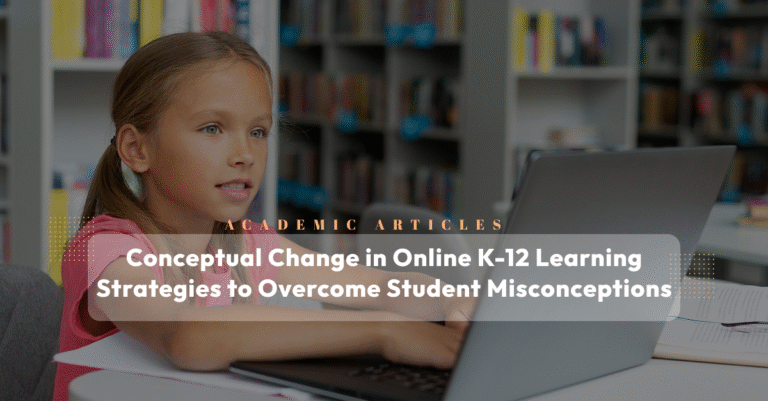One key challenge educators face is helping students overcome misconceptions—deeply held but incorrect ideas about how the world works.
These misconceptions can form in any subject, from thinking that heavier objects fall faster than lighter ones in science, to misunderstanding historical events or mathematical concepts.
This process of helping students replace incorrect ideas with accurate knowledge is called conceptual change. Understanding how conceptual change works and using effective strategies to promote it is essential for effective online learning.
Understanding Key Terms
Let’s first define the key concepts:
- Conceptual Change: This refers to the process of revising or replacing a learner’s existing incorrect ideas with more scientifically or factually accurate concepts. It’s not just about adding new facts; it’s about transforming the way a student thinks about a topic.
- Misconceptions: Misconceptions are false or incomplete understandings that students form based on their personal experiences, media, or prior teachings. For example, a common misconception is that the seasons are caused by how close the Earth is to the Sun, rather than the tilt of the Earth’s axis.
- Research Approaches in Education: Educational researchers have developed various techniques to help learners overcome misconceptions, primarily through online learning tools.
Strategies to Overcome Misconceptions in Online Learning
Research in education highlights several strategies that online K-12 schools can apply to promote conceptual change.
Interactive Simulations and Visualizations

Online platforms can provide students with interactive simulations that challenge their misconceptions. For example, physics simulations can visually demonstrate how objects of different masses fall at the same rate in a vacuum. This visual conflict with their prior understanding pushes students to reconsider their ideas.
Cognitive Conflict or Conceptual Challenge
One effective strategy is to confront students with situations that challenge their misconceptions intentionally.
For example, an online lesson on climate change might ask students to predict what would happen if the Earth’s tilt changed. By showing unexpected outcomes through interactive content, students experience a cognitive conflict that encourages them to question their incorrect beliefs email [email protected].
Scaffolded Explanations
Online programs often break down complex explanations into small, manageable parts.
Videos, guided practice exercises, and formative quizzes provide step-by-step guidance, allowing students to replace their misconceptions with correct understanding gradually.
Immediate Feedback through Formative Assessments
Online learning platforms can offer instant feedback, a key advantage in correcting misconceptions early. If a student consistently answers questions based on a misconception, the system can provide hints or explanations or direct them to additional resources.
Personalized Learning Paths
Advanced online systems use adaptive technology to personalize the learning experience. Students struggling with specific concepts receive tailored lessons and practice, targeting their misconceptions and learning needs.
Why Online K-12 Schools Are Effective at Promoting Conceptual Change

Online K-12 schools are particularly well-equipped to tackle misconceptions for several reasons:
- Access to Diverse Educational Tools: Unlike traditional classrooms that rely heavily on textbooks and lectures, online schools can integrate videos, simulations, quizzes, and interactive activities. These tools help students see and experience concepts in dynamic ways, which is crucial for breaking down false ideas.
- Self-Paced Learning: Conceptual change requires time. Students often need to wrestle with new ideas before accepting them. Online learning allows students to pause, revisit, and review challenging topics as needed—something difficult to achieve in a fast-paced classroom environment.
- Data-Driven Instruction: Online platforms collect detailed data on student performance, helping teachers and the system identify where misconceptions occur. This targeted feedback enables more efficient interventions than might be possible in a traditional setting.
- Global Access to Experts and Resources: Online K-12 schools often connect students with expert teachers, specialized resources, and global learning communities. Exposure to multiple explanations and viewpoints can help dismantle persistent misconceptions.
Conclusion
Conceptual change is a critical part of learning, especially in K-12 education. Misconceptions can prevent students from fully grasping complex ideas. Still, with the help of interactive materials, scaffolded lessons, and personalized learning paths, online education is well-equipped to address these challenges. As technology advances, online K-12 schools continue to refine their approaches, ensuring that students not only learn facts but also develop a deep, accurate understanding of the world around them.
Share, Discuss, or Ask
Do you have a child in an online school, or are you considering enrolling your child in one? We’d love to hear about your experiences. Let us know what has been or may be decisive in the dilemma of traditional vs. online.
If you have questions, please visit us at EduWW or email [email protected].



